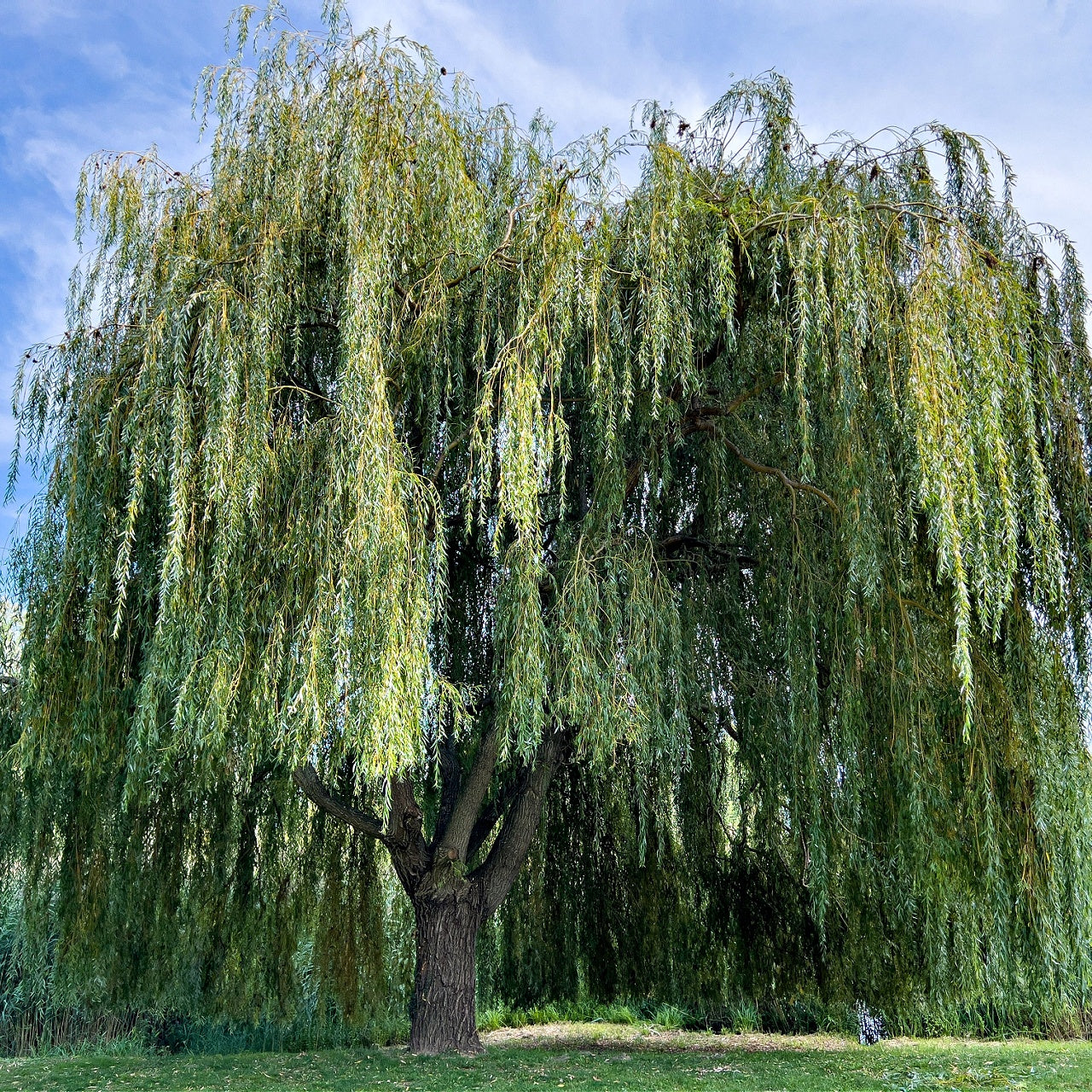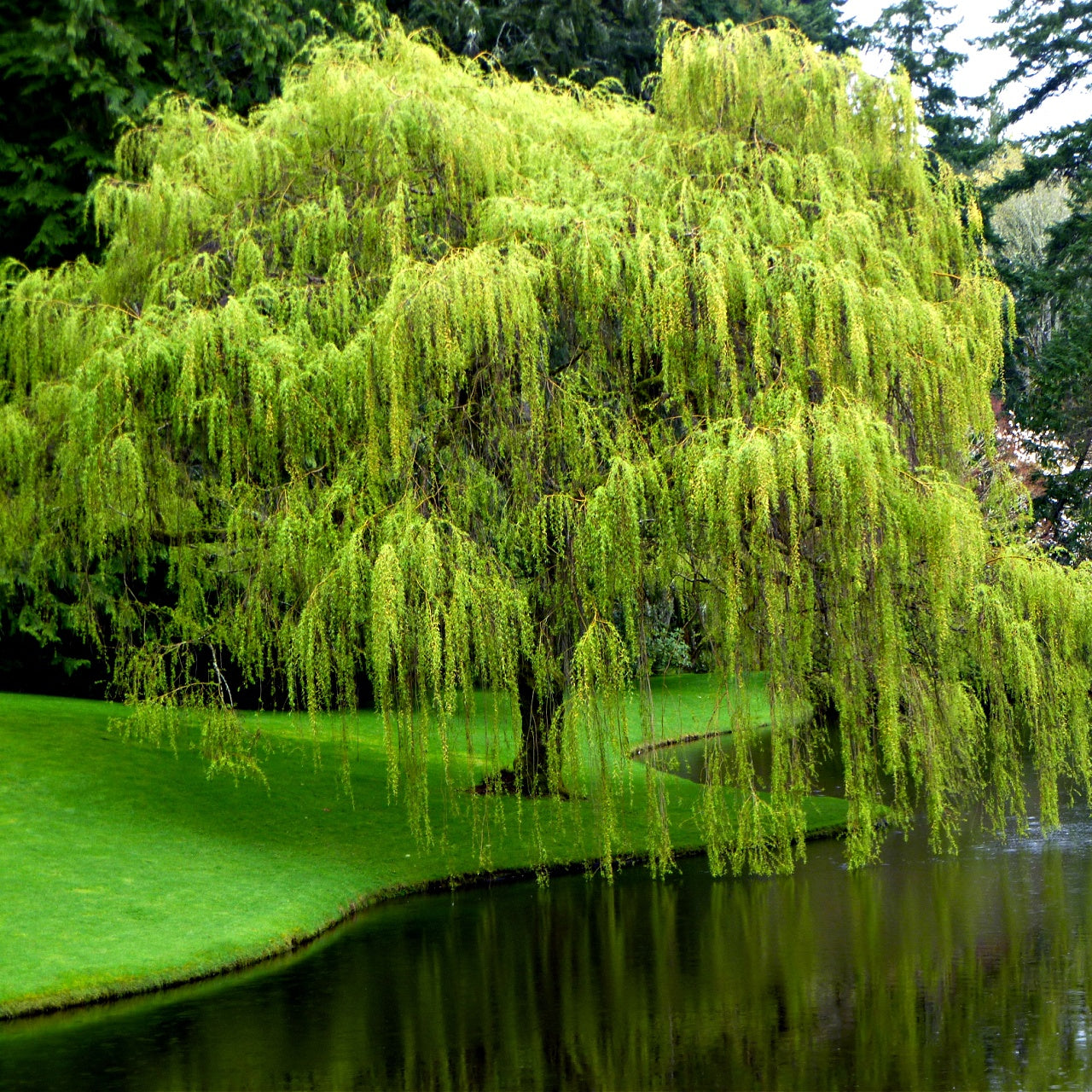Weeping Willow Trees
Weeping Willow Trees
This plant ships:
Ships November–April within 10 business days after the order is placed.Couldn't load pickup availability
Exposure
Full SunHeight at Maturity
Over 25 FeetUsage
LandscapingShipped As
Bare-rootShips
Ships November–April within 10 business days after the order is placed.Planting Zones
4-9Weeping Willow Trees
The Weeping Willow Trees and its graceful falling branches form a shade canopy that can reach the ground, creating an outdoor living room as much as 40 feet across. Its branching habit, with big forks and a stout trunk, makes it perfect for climbing for families with children. They are tolerant to various soil pHs, and these gorgeous and surprisingly plants can be found almost anywhere in the continental U.S.
Their reddish-brown bark contains:
- Salicin.
- A natural alternative to aspirin.
- It has been extracted to treat headaches and other mild pain for centuries.
Today, however, they are often used to treat boggy areas in residential landscaping and low areas prone to flooding and eroding riverbanks. They thrive near water and tolerate salt.
Weeping Willow Trees Appearance
The leaves are deep green, long, and slender, with a silvery-green back. Catkins appear in late spring. The leaves turn late in the season, in the fall, becoming a bright gold or green-yellow before falling. Its delicate silhouette in winter is as lovely as it is in the whole summer. People have used its slender branches for centuries in various arts and crafts, including baskets, paintbrushes, and dyes for leather.
The History Of The Willow Trees
William Shakespeare or Harry Potter fans will find it especially appealing, as it stars in both collections. With mythical connections stretching back centuries, it has become a favorite.
Growth
It can reach up to 40 feet Tall and 35 Feet Wide When Fully Matured
Hardiness Zones are 6-8, and they are best done by water, such as rivers, lakes, and ponds, but will do fine in well-watered yards.
Requirements
The best soil for them is acidic, alkaline, loamy, moist, rich, sandy, and clay. They can grow 24 inches annually in sunlight and partial shade, making them fast and easy to grow.
Majestic in appearance, it originated in China but has spread worldwide in recent centuries. They must be identified with those mentioned about Babylon in the Psalms. They are associated with melancholy because the branches show them weeping.
This impression is amplified by their frequent presence on the banks of rivers, ponds, and other bodies of water. In the United States, that range includes middle America and most of the south, northeast, and northwest. While placement near water is ideal, they can also be planted in drier conditions.
It proliferates, sometimes increasing by as much as two feet a year. In addition to their positive ornamental qualities, they provide excellent shelter for various birds and small mammals and are their favorite nesting spots.
The Umbrella-like Cover of The Branches Blocks the Sunlight Underneath
At maturity, a person could comfortably sit under it and be sheltered from the sun. Hence, the Weeping Willow trees make excellent book nooks and picnic spots. The branches add a touch of elegance to any landscape, on their own or as part of a grove.
It is native to drier areas in the northern regions of China. For the past 1,000 years, it has been grown and brought to other parts of the world, known as the Silk Road, to southwestern areas of Asia and Europe. It is found in Asia and Europe but grows in many parts of North America.
They are considered medium to large, considering tree size. They become an average of 20-25 meters (66-82 feet) tall. With their size, their canopies can cover a width of up to 35 feet.
They grow fast, but unfortunately, they have a shorter lifespan, 40 to 75 years. The shoots are a yellowish-brown color and have tiny buds. The leaves are what make them famous.
They are light green, narrow, and spiraled. During the fall, the leaves turn to a golden hue or yellow. The flowers that grow are laid out in a circular pattern and, in early spring, are visible—males and females separate the flowers on different trees. They live near water and prefer wet soils.
They do well in adjustable weather conditions, but they do not do well in life-threatening climate conditions. If they can access water and sun, they can grow ten feet a year. For better progress, they should be planted in spring or fall.
For pruning, always do it in the fall; focus more on the lower portion of branches and allow the top ones to dangle. Most people love looking at them since they are one of the most famous plants. Even Claude Monet has paintings with them. Many people use them for their shade and a proper resting place.
Share



A great and massive yet beautifully stands in your frontyard. Such a spectacular image.



